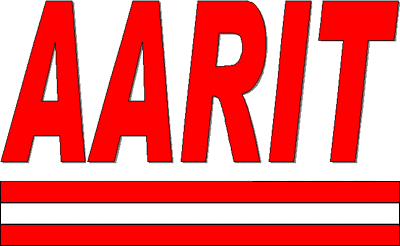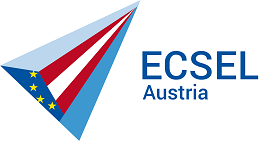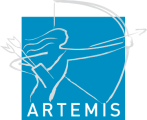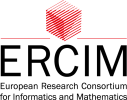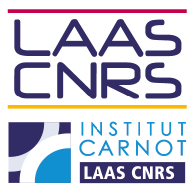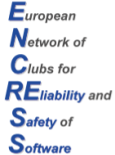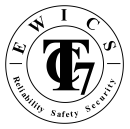SAFADAPT‘16
SAFADAPT‘16 (Cancelled)
Announcement:
SAFADAPT WS is canceled
1st International Workshop on
Assurance of Safety-Critical Systems with Higher - Order Dynamics
Theme and Goals
Recent developments in safety-critical systems involve the increasing use of (self-)adaptation, self-management, or self-organization. We refer to these concepts by the term higher-order dynamics encompassing mechanisms built into these systems which allow them to change their effective, deterministic behavior and internal structure during operation. These mechanisms can for example comprise both, the (runtime) reconfiguration of the system architecture and the adaptation of system behavior, to react to changing operational conditions and task requirements. This can involve techniques such as dynamic programming or machine learning (ML), particularly deep learning, which includes the processing of large amounts of data driving and characterizing system behavior previously different or unspecified.
We identified two main drivers for these developments: (i) autonomy or intelligence, i.e., increasing task automation and decreasing human involvement in control, and (ii) heterogeneity, i.e., increasing number of involved technologies and degree of distribution. Highly-assisted and self-driving cars as well as autonomous air vehicles can be seen as important examples for safety-critical systems with higher-order dynamics.
Higher-order dynamics raise the issue of safety analysis and assurance of a system whose functionality (is not or) cannot be totally and deterministically specified at design time and for V&V of system behavior. For this assurance task we have to particularly consider optimization and learning problems. Higher-order dynamics have been studied in system and control theory for quite a while. However, their increasing usage in contemporary safety-critical systems demand novel approaches, methods, and models for analysis, design, and assurance of these systems.
See also PDF versions of the CfP and the poster.
Call for Papers
For this single-day workshop, we kindly request contributions on problem statements, methodology, technical research, and tools in (but not limited to) the following topics:
- Assurance when system functionality is determined before operation,
this includes off-line applications of e.g. ML - Assurance when higher-order dynamics are effective during operation,
this includes on-line applications of e.g. ML - Modeling for safety analysis of systems with higher-order dynamics
- Safe incremental controller synthesis and optimization
- Software technology and system architecture for safety-critical systems
- Security threats influencing safety of higher-order dynamics
- Protection of higher-order dynamics against security attacks
- Higher-order dynamics and responsibility of users, operators, and vendors
- Application and assurance of machine and deep learning in safety critical systems
- Limits in the assurance of higher-order dynamics
The workshop will contain a keynote speech and a panel discussion.
How to Submit
Prospective participants are invited to submit a 6 page (problem statement, tools) or a 12 page (methodology, technical research) paper. All submissions are expected to be original work not published, or in submission, elsewhere.
SAFADAPT 2016 will be peer-reviewed by at least three members of the program committee and the organizers for quality and relevance. SAFADAPT 2016 will employ a double-blind reviewing process. This means that committee members will not have access to authors' names or affiliations as they review a paper.
To facilitate this, submitted papers must adhere to two rules:
(1) author names and institutions must be omitted, and
(2) references to authors' own related work should be in the third person (e.g., not "We build on our previous work ..." but rather "We build on the work of ...").
The purpose of this process is to help the PC and external reviewers come to an initial judgement about the paper without bias, not to make it impossible for them to discover the authors if they were to try. Nothing should be done in the name of anonymity that weakens the submission or makes the job of reviewing the paper more difficult (e.g., important background references should not be omitted or anonymized). In addition, authors should feel free to disseminate their ideas or draft versions of their paper as they normally would. For instance, authors may post drafts of their papers on the web or give talks on their research ideas.
Accepted papers will be published in the SAFECOMP 2016 Workshop Proceedings, to be published by Springer, in the Lecture Notes in Computer Science (LNCS) Series and indexed in DBLP.
EasyChair submission website: https://easychair.org/conferences/?conf=safadapt16.
Important Dates
Full paper submission 17 May 2016
Notification of acceptance 07 June 2016
Camera-ready submission 20 June 2016
Workshop Organizers
- Mario Gleirscher, TU Munich, DE
- Stefan Kugele, TU Munich, DE
- Hans-Jörg Vögel, BMW Group, DE
Program Committee
- Matthias Althoff (TU Munich, DE)
- Ruth Breu (U Innsbruck, AT)
- Manfred Broy (TU Munich, DE)
- Wolfram Burgard (U Freiburg, DE)
- Michael Felderer (U Innsbruck, AT)
- Andreas Herkersdorf (TU Munich, DE)
- Stefan Katzenbeisser (TU Darmstadt, DE)
- Phil Koopman (CMU, US)
- Markus Maurer (TU Braunschweig, DE)
- Jürgen Mottok (OTH Regensburg, DE)
- Bernhard Schätz (TU Munich, DE)
- Nadine Schlüter (U Wuppertal, DE)
- Bernd Spanfelner (Autoliv, DE)
- Ketil Stølen (U Oslo, NO)
- Stefan Wagner (U Stuttgart, DE)
- Doris Wild (Mentor Graphics, DE)







